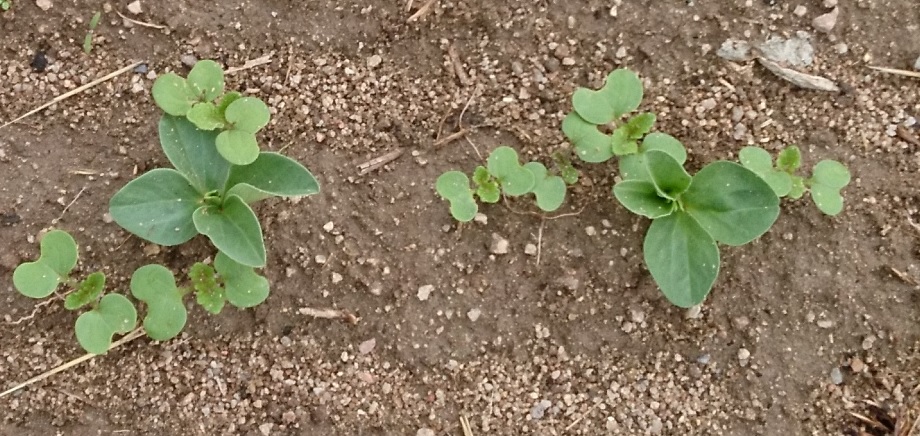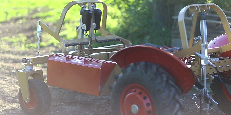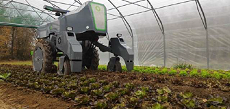ROSEAU
The project
The ROSEAU project aims to develop tools to carry out in-row weed control operations.
These tools act on three components (perception/decision/action), which are the three fundamental concepts of sensorimotor loops. Sensorimotor loops are control loops that link the sensors (“sensori…”) to the actuators (“…motors”) via multi-level decision layers, ranging from reflexes (very fast loops, in the region of one hundredth of a second) to detailed thoughts (which can take several hours).
The objective of ROSEAU is to apply this framework to in-row weed control operations, with tools ranging from detection/eradication of weeds on the fly, through weed proliferation and intervention windows, to optimisation of farming methods.
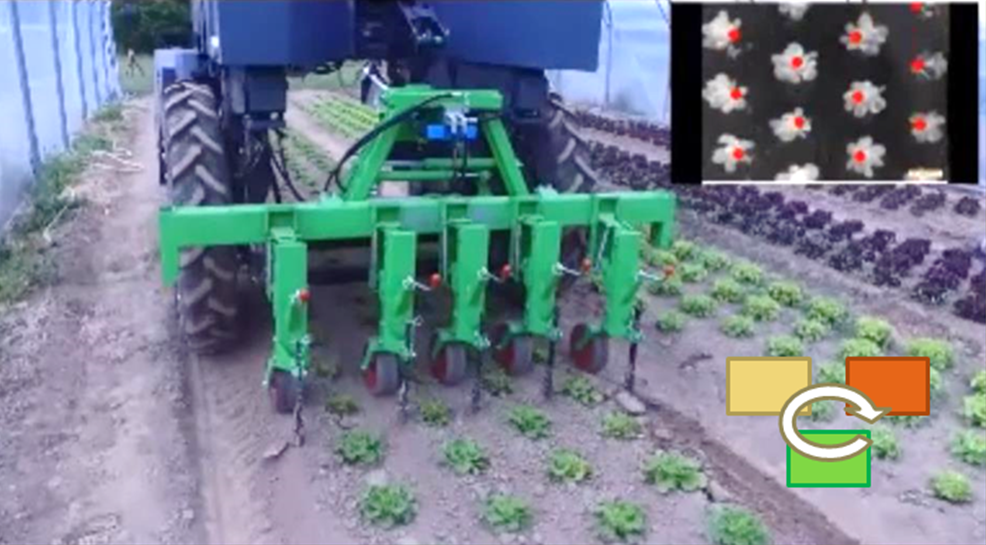
The consortium
The ROSEAU consortium is made up of five partners.
SITIA
 SITIA develops and integrates innovative robotic solutions in order to make R&D a reality. Through its Factory and Offroad branches, SITIA’s projects are carried out by a team of academics and engineers combining all of the skills of robotics, over 20 years’ experience and detailed knowledge of cutting-edge technology (several publications and patents relating to all-terrain robotics).
SITIA develops and integrates innovative robotic solutions in order to make R&D a reality. Through its Factory and Offroad branches, SITIA’s projects are carried out by a team of academics and engineers combining all of the skills of robotics, over 20 years’ experience and detailed knowledge of cutting-edge technology (several publications and patents relating to all-terrain robotics).
AgroEcologie Mixed Research Unit
 UMR AgroEcologie associates INRA and the University of Bourgogne and AgroSup Dijon. The “Precision Agriculture” Group working on ROSEAU focuses on crop field characterisation in order to reduce the use of chemical inputs and develop innovative agricultural equipment. The dual aim is to provide new management practices with decision-making tools and design innovative, environmentally friendly systems.
UMR AgroEcologie associates INRA and the University of Bourgogne and AgroSup Dijon. The “Precision Agriculture” Group working on ROSEAU focuses on crop field characterisation in order to reduce the use of chemical inputs and develop innovative agricultural equipment. The dual aim is to provide new management practices with decision-making tools and design innovative, environmentally friendly systems.
IRSEEM - Esigelec
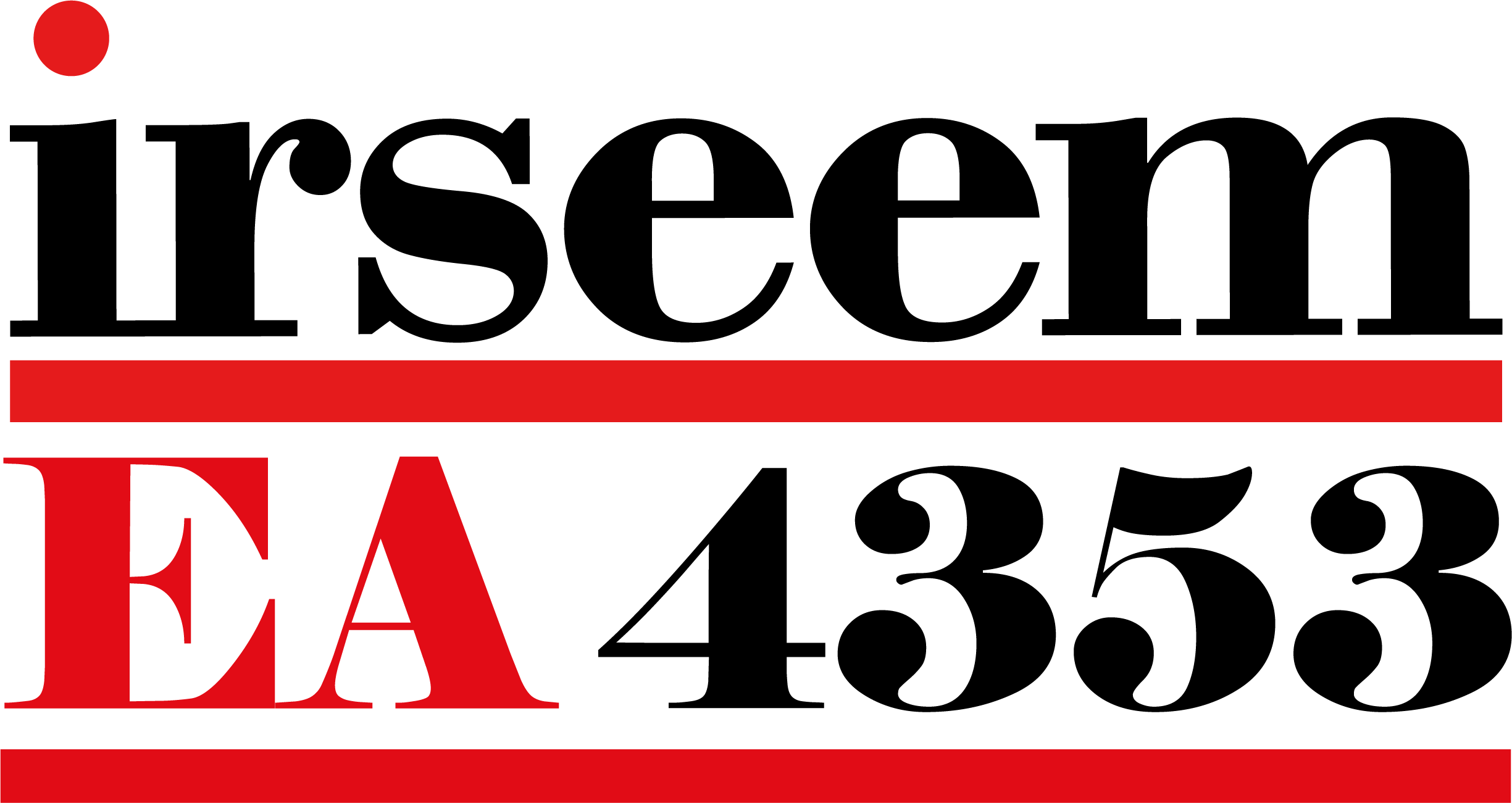 IRSEEM (Institut de Recherche de Systèmes Electroniques Embarqués, Embedded Electronic System Research Institute) was created in 2001 within ESIGELEC. It combines electronics, automation, signal and image processing, network and telecommunications expertise to find innovative, sustainable responses to the challenges of embedded electronic systems, which are increasingly used in the objects and projects around us.
IRSEEM (Institut de Recherche de Systèmes Electroniques Embarqués, Embedded Electronic System Research Institute) was created in 2001 within ESIGELEC. It combines electronics, automation, signal and image processing, network and telecommunications expertise to find innovative, sustainable responses to the challenges of embedded electronic systems, which are increasingly used in the objects and projects around us.
Link to the ARGOS challenge
Brittany Regional Chamber of Agriculture
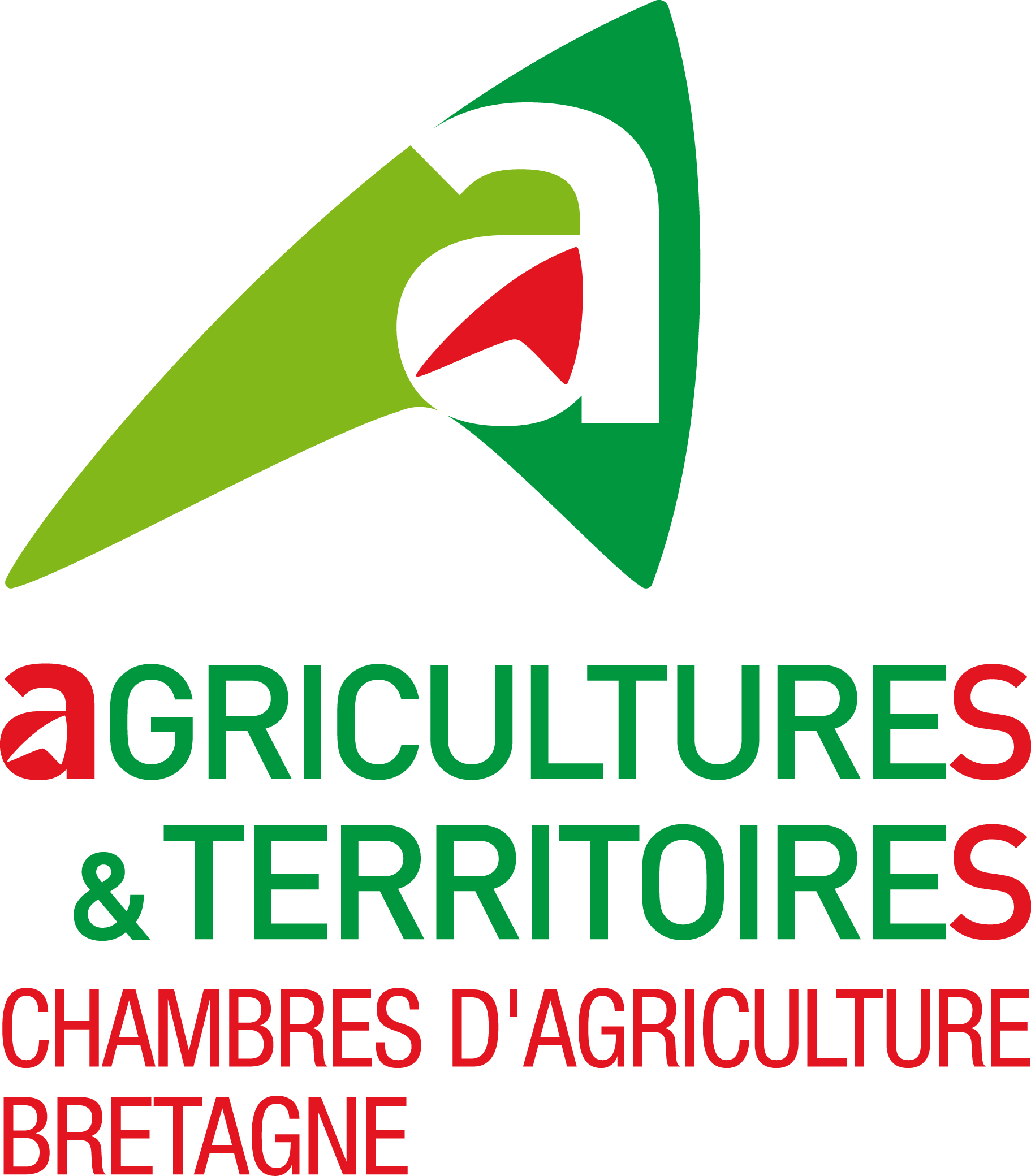 The Brittany Regional Chamber of Agriculture employs 600 engineers and technicians working to support farmers. The regional applied research department employs 55 specialist engineers and has seven experimental stations covering plant and livestock production, with the main tasks of innovating, distributing references, providing technical support to farmers, and representing farmers’ interests around the world.
The Brittany Regional Chamber of Agriculture employs 600 engineers and technicians working to support farmers. The regional applied research department employs 55 specialist engineers and has seven experimental stations covering plant and livestock production, with the main tasks of innovating, distributing references, providing technical support to farmers, and representing farmers’ interests around the world.
Pays de Loire Regional Chamber of Agriculture
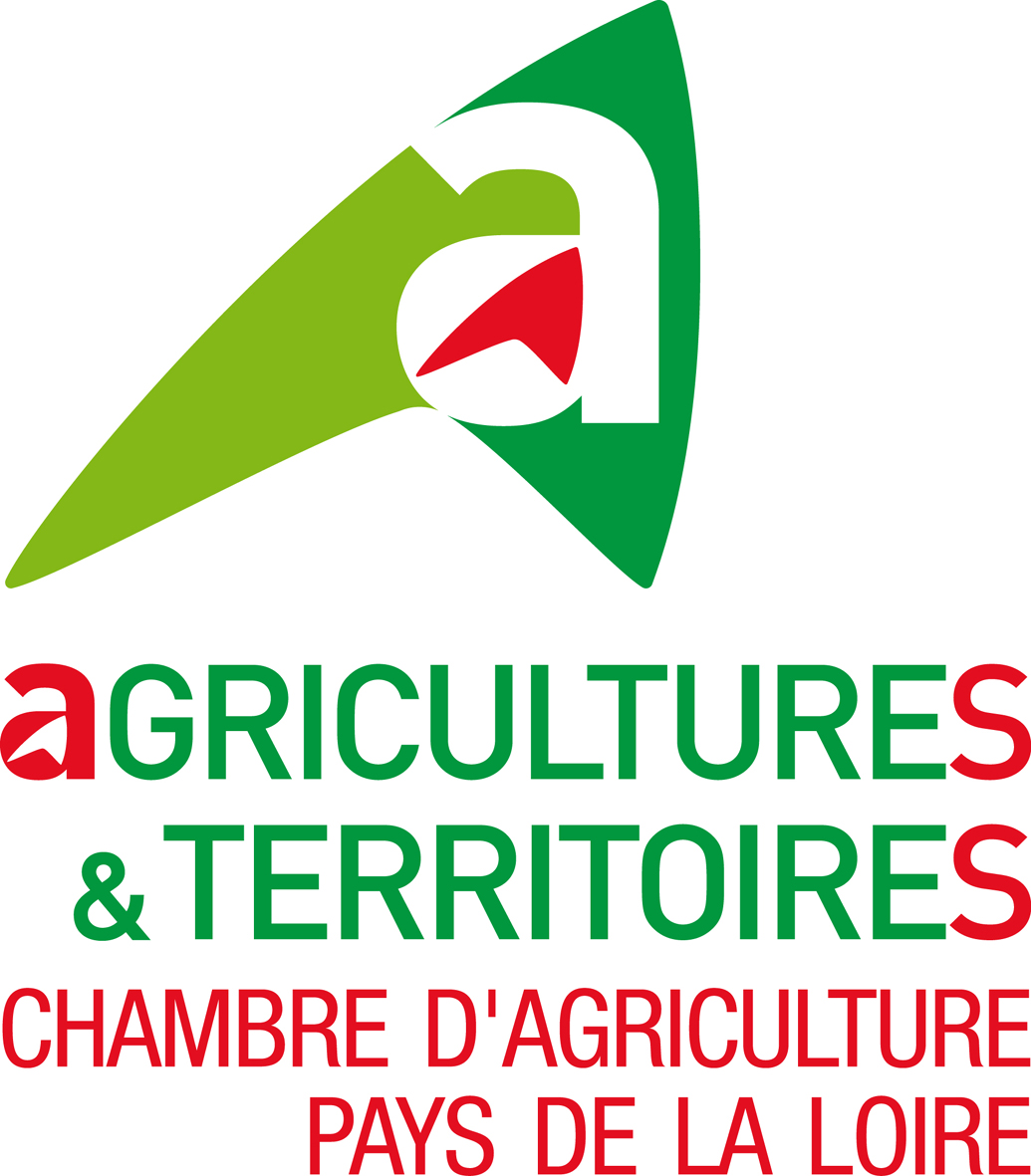 The Pays de Loire Regional Chamber of Agriculture is a public body that represents regional farmers and the rural community. It has a technical role, providing a wide range of services to farmers and rural stakeholders. CRAPdL manages the DERVAL experimental farm, which is a showcase for digital farming, forming part of the French DigiFermes® network, and will be the testing ground for the ROSEAU project. The farm is also closely linked to the Nozay Centre régional AgroEquipment (regional agricultural equipment centre) and its precision agriculture expertise.
The Pays de Loire Regional Chamber of Agriculture is a public body that represents regional farmers and the rural community. It has a technical role, providing a wide range of services to farmers and rural stakeholders. CRAPdL manages the DERVAL experimental farm, which is a showcase for digital farming, forming part of the French DigiFermes® network, and will be the testing ground for the ROSEAU project. The farm is also closely linked to the Nozay Centre régional AgroEquipment (regional agricultural equipment centre) and its precision agriculture expertise.
Scientific and Technical Committee
In order to increase its relevance and scope, the ROSEAU consortium will be supported by a Scientific and Technical Committee made up of experts in farming practices and customs and human science.

The ROSEAU solution
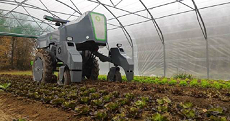
Detection
- Multi-scale perception: from a drone and from a terrestrial mobile robot
- Cameras: Use of cameras sensitive in the visible and infrared ranges
- Processing: Detection of plants and weeds via image processing and learning algorithms. Aim to extend to distinguishing the weed family and its development to improve decisions.
Decision
- On the basis of drone detection: Use of a simulator to optimise robot intervention according to weather intervention windows and weed proliferation and type.
- On the basis of terrestrial robot detection: during intervention, action decision and generation of mechanical tool or spray trajectory to eliminate weeds locally.
Action
- Weed control action: adaptation and development of mechanical and chemical in-row weed control tools.
- Intervention: autonomous robot navigation adapted in real time to the working requirements of the tool in use.
- Robot behaviour: robust effectiveness of robot autonomous decision-making for efficiency in farming contexts.
For more information
Off-road perception & autonomy
Hassan NEHME – Sitia/Irseem CIFRE thesis: “Perception of the navigation environment for an autonomous robot in an agricultural environment” Defended in June 2022
- Nehme, Hassan, Clément Aubry, Thomas Solatges, Xavier Savatier, Romain Rossi, and Rémi Boutteau. “LiDAR-based Structure Tracking for Agricultural Robots: Application to Autonomous Navigation in Vineyards.” Journal of Intelligent & Robotic Systems 103, no. 4 (2021): 1-16
- Nehme, Hassan, Clément Aubry, Romain Rossi, and Rémi Boutteau. “An Anomaly Detection Approach to Monitor the Structured-Based Navigation in Agricultural Robotics.” In 2021 IEEE 17th International Conference on Automation Science and Engineering (CASE), pp. 1111-1117. IEEE, 2021
- Nehme Hassan “Détection de nouveauté et d’anomalie pour le suivi de structure autonome” during the webinar “IA et robotique agricole” of RobAgri association. 2020
Weed identification
Jehan-Antoine VAYSSADE – UMR Agroécologie Dijon thesis: “Multi-criteria approach for the characterization of weeds by imagery” Defended in March 2022
- Vayssade, Jehan-Antoine, Gawain Jones, Christelle Gée, and Jean-Noël Paoli. “Pixelwise instance segmentation of leaves in dense foliage.” Computers and Electronics in Agriculture 195 (2022): 106797
- Vayssade, Jehan-Antoine, Jean-Noël Paoli, Christelle Gée, and Gawain Jones. “DeepIndices: Remote Sensing Indices Based on Approximation of Functions through Deep-Learning, Application to Uncalibrated Vegetation Images.” Remote Sensing 13, no. 12 (2021): 2261
- Vayssade, Jehan-Antoine, Gawain Jones, Jean-Noël Paoli, and Christelle Gée. “Two-step Multi-spectral Registration Via Key-point Detector and Gradient Similarity: Application to Agronomic Scenes for Proxy-sensing.” In VISIGRAPP (4: VISAPP), pp. 103-110. 2020
- Vayssade, Jehan-Antoine, Jean-Noël Paoli, Christelle Gée, and Gawain Jones. “DeepIndices: Une nouvelle approche des indices de télédétection basée sur l’optimisation et l’approximation de fonctions par DeepLearning. Application aux indices de végétation sur des données non calibrées.” In Conference: RJCIA: Rencontres des Jeunes Chercheur· ses en Intelligence Artificielle. 2021
Funded research projects
WeedElec

Localised weeding robot using a high-voltage electrical method combined with predictive management and post-evaluation via drone-mounted hyperspectral vision

